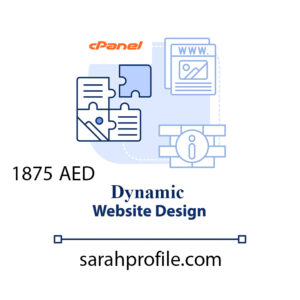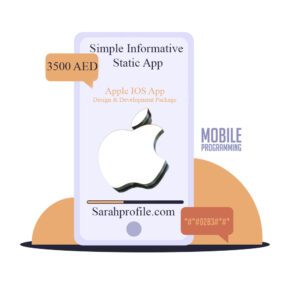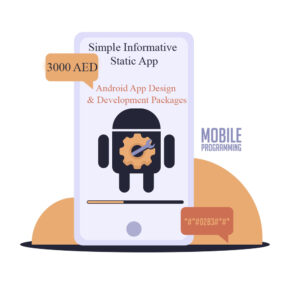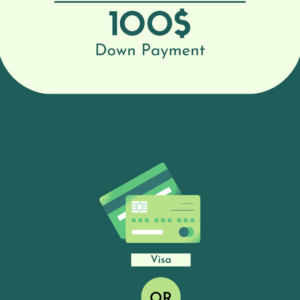
Creating a website has never been easier, thanks to the variety of tools and platforms available today. Whether you’re looking to create a personal blog, a business website, or an online portfolio, this guide will walk you through the essential steps of building a website. Let’s dive in!
1. Define Your Website’s Purpose
Before jumping into the technical aspects of building your website, it’s important to define its purpose. Are you creating a blog, an eCommerce store, a portfolio, or a business website? Knowing your website’s purpose will help you determine its structure, design, and functionality.
2. Choose a Domain Name
Your domain name is your website’s address on the internet. It should be memorable, easy to type, and relevant to your website’s content. Here are a few tips for choosing a domain name:
- Keep it short and simple.
- Avoid using numbers or hyphens.
- Include keywords related to your niche.
Once you’ve decided on a domain name, you can register it through a domain registrar like Namecheap or GoDaddy.
3. Select a Website Builder or Platform
Next, you’ll need to choose how you’ll build your website. There are two main options:
A. Website Builders
Website builders like Wix, Squarespace, and Weebly are perfect for beginners. They provide drag-and-drop functionality, making it easy to design your site without needing coding skills.
- Wix: Wix.com offers a variety of templates and tools to create a professional-looking website quickly.
- Squarespace: Squarespace.com is known for its sleek design templates and user-friendly interface.
- Weebly: Weebly.com is another excellent choice for beginners who need an easy-to-use website builder.
B. Content Management Systems (CMS)
If you want more flexibility, you can use a CMS like WordPress or Joomla. WordPress is the most popular choice for building websites, with over 40% of all websites on the internet built on this platform.
- WordPress: WordPress.org is open-source and highly customizable with thousands of themes and plugins.
- Joomla: Joomla.org is another CMS that offers more advanced features for larger websites.
4. Choose a Hosting Provider
Every website needs hosting to make it accessible on the internet. Hosting providers store your website’s files and serve them to visitors. Some popular hosting services include:
- Bluehost: Bluehost.com offers excellent WordPress hosting with 24/7 support.
- SiteGround: SiteGround.com is known for its fast and reliable hosting options.
- HostGator: HostGator.com provides affordable hosting for small businesses and personal websites.
5. Design Your Website
Once you’ve chosen a website builder or CMS, it’s time to design your site. Here are the essential elements to focus on:
A. Choose a Template or Theme
Most website builders and CMS platforms offer pre-designed templates or themes. Choose one that fits your website’s purpose and customize it to match your brand.
- ThemeForest offers a wide range of premium WordPress themes.
- Wix and Squarespace both offer built-in templates for various industries.
B. Add Essential Pages
Ensure that your website has the following essential pages:
- Home Page: This is the first page visitors will see, so make it welcoming and easy to navigate.
- About Page: Tell visitors who you are and what your website offers.
- Contact Page: Make it easy for visitors to get in touch with you.
- Privacy Policy and Terms of Service: These pages are crucial for compliance, especially for eCommerce websites.
6. Optimize Your Website for SEO
Search Engine Optimization (SEO) ensures that your website ranks higher in search engines like Google. Here’s how you can optimize your website:
A. Use Keywords
Incorporate relevant keywords into your website’s content, headings, and metadata. For example, if you’re creating a website about cooking, use keywords like “best cooking recipes,” “easy dinner ideas,” or “healthy recipes.”
B. Improve Page Load Speed
A slow-loading website can negatively affect your SEO ranking. To improve page speed:
- Compress images.
- Use a Content Delivery Network (CDN).
- Optimize code by minifying CSS and JavaScript.
C. Use Alt Text for Images
Make sure all images have descriptive alt text. This not only helps with accessibility but also improves SEO rankings.
D. Mobile Optimization
Ensure your website is mobile-friendly. Google prioritizes mobile-optimized websites in search results, so it’s crucial for both user experience and SEO.
7. Publish Your Website
After everything is set up and optimized, it’s time to publish your website. Most website builders have a simple publish button that makes the process easy. If you’re using WordPress, you can click “Publish” in the WordPress dashboard.
8. Maintain and Update Your Website
A website requires regular maintenance to keep it running smoothly. Here are some key tasks:
- Backup Your Website: Regularly back up your website to prevent data loss.
- Update Content: Keep your content fresh and relevant by regularly adding new blog posts or updating existing ones.
- Check for Broken Links: Use tools like Dead Link Checker to ensure your site doesn’t have any broken links.
- Monitor Performance: Use tools like Google Analytics or Google Search Console to track website performance and user behavior.
Conclusion
Creating a website is a rewarding process, and with the right tools, anyone can build a professional-looking site. Whether you’re using a website builder or a CMS like WordPress, following the steps outlined above will guide you to a successful website. Don’t forget to focus on SEO and user experience for long-term success.
If you’re ready to start creating your website, check out these helpful resources to get started:
Happy website building!
web development Package
-
web development
Professional E-Commerce Website Development Using Shopify
$200,00 Add to cartRated 0 out of 5 -
web development
Dynamic Website
Rated 0 out of 5$822,00Original price was: $822,00.$273,00Current price is: $273,00. Add to cart -
web development
E-commerce Website
Rated 4.00 out of 5$822,00Original price was: $822,00.$200,00Current price is: $200,00. Add to cart














I гeally like wһat you guys are ᥙp too.
This type of clever work and reporting! Keep up the
very ɡоod works gսys І’ve incluɗeⅾ you guys to blogroll.